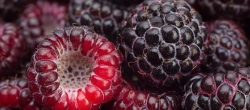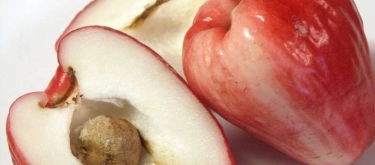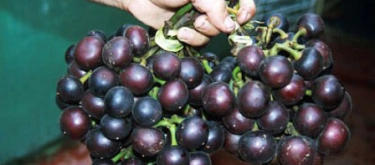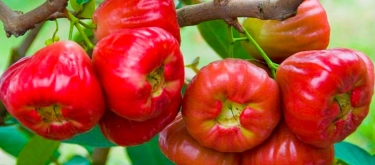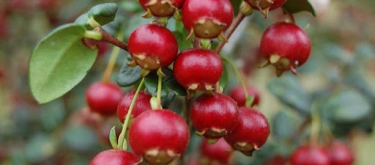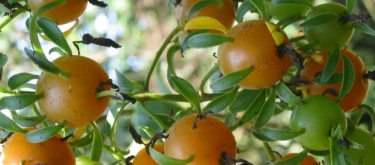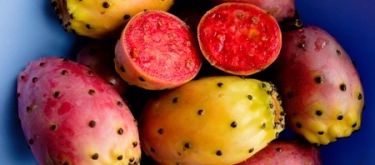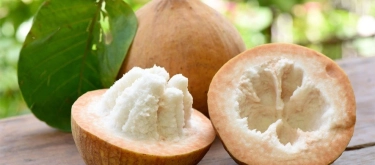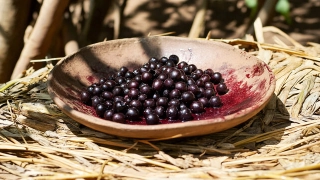Rhodomyrtus: Taste Profile, Aroma, Benefits and Health Risks
Rhodomyrtus (also known as Rose Myrtle, Downy Myrtle, Hill Gooseberry; Rhodomyrtus tomentosa) is a berry-bearing shrub native to Southeast Asia, particularly abundant in regions of Vietnam, Thailand, Malaysia, and Indonesia. Valued for centuries for its distinctive flavor, medicinal properties, and ornamental beauty, Rhodomyrtus fruits have recently attracted renewed interest for culinary exploration and nutritional research.
Rhodomyrtus fruit is generally safe for consumption, but due to limited research, caution is recommended for pregnant and breastfeeding women. Individuals allergic to berries or sensitive to tannins should consume in moderation to avoid digestive discomfort.
What does Rhodomyrtus taste like?

Complete Sensory Description:
Taste
Rhodomyrtus berries offer a pleasant, mildly sweet and slightly astringent taste, characterized by fruity-floral notes reminiscent of blueberries, cranberries, and raspberries, balanced by subtle earthy undertones.
Aroma
The aroma is mildly floral, sweet, and berry-like, with distinct fragrance notes evocative of rose petals, raspberries, and subtle hints of herbs or green tea.
Texture
Rhodomyrtus fruits are soft and juicy, with a slightly grainy pulp due to tiny edible seeds, creating a pleasant contrast of softness and gentle crunchiness.
Appearance
The berries are small, round (approximately 1–2 cm in diameter), and covered in fine, velvety hairs, giving them a characteristic grayish-purple or purplish-black appearance when fully ripe. Internally, the pulp ranges from pinkish to deep purple-red, speckled with small, edible seeds.
In-depth Flavor Analysis:
The distinctive flavor profile of Rhodomyrtus arises from a complex blend of sugars, organic acids, tannins, and aromatic volatile compounds, creating a well-rounded sensory experience:
-
Sweetness Profile: Moderate sweetness results primarily from fructose and glucose, providing subtle yet satisfying fruity undertones, comparable to mild raspberries or blueberries.
-
Acidic & Astringent Profile: Organic acids, primarily malic and citric acids, contribute gentle tartness and freshness. Significant levels of tannins impart mild astringency, particularly noticeable when the fruit is underripe, adding complexity and depth to the fruit’s overall flavor.
-
Aromatic Compounds: Terpenes (such as geraniol and linalool) produce distinct floral notes resembling roses or jasmine. Berry-like aromas result from volatile esters, notably ethyl acetate and methyl anthranilate, which are commonly associated with fruity fragrances found in berries.
-
Environmental Factors Influencing Flavor: Climate, soil, and ripeness strongly influence tannin and sugar balance, with fruits grown in sunnier climates typically exhibiting enhanced sweetness and aromatic intensity.
Varieties and Culinary Applications:
Rhodomyrtus does not have formally recognized commercial varieties; however, regional differences affect size, sweetness, and flavor intensity. Common culinary uses include:
- Fresh Consumption: Eaten fresh as a snack or dessert accompaniment.
- Preserves and Jams: Highly popular for jams, jellies, sauces, and syrups due to their natural sweetness and attractive color.
- Beverages: Fermented or used fresh to produce wines, juices, and aromatic herbal teas.
- Desserts: Incorporated into pies, pastries, ice creams, and fruit salads, enhancing flavor complexity.
Selection and Storage:
Choose fully ripe Rhodomyrtus fruits exhibiting deep purple-black or grayish-purple coloration, firm yet yielding gently to pressure, without significant bruising or mold. Store fresh berries refrigerated in ventilated containers for up to one week. For prolonged storage, freezing berries or turning them into jams or syrups is recommended.
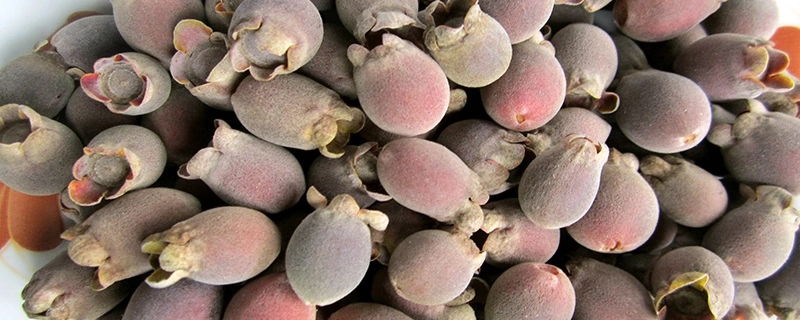
Nutritional Insights:
Rhodomyrtus berries are nutritionally beneficial, rich in dietary fiber, antioxidants (including anthocyanins and polyphenols), vitamin C, vitamin A precursors, and essential minerals such as potassium and calcium. Regular consumption can help address oxidative stress, reduce inflammation, and support digestive health due to high fiber content. The antioxidant compounds found in these berries may potentially offer protective cardiovascular and anti-inflammatory benefits, making them valuable for addressing common health concerns associated with chronic inflammation or immune system deficiencies.
Expert Insights & Culinary Tips:
- Flavor Pairings: Rhodomyrtus berries pair excellently with honey, citrus fruits (particularly lime or lemon), ginger, vanilla, and creamy textures like yogurt or cream cheese.
- Preparation Tips: Cooking Rhodomyrtus berries helps reduce astringency and enhance sweetness, ideal for sauces, syrups, or jams. Fresh berries can be slightly crushed or macerated with sugar or honey to balance flavor and improve texture.
- Safety Recommendation: Although edible, consume fruits from reputable sources or identified wild plants, as incorrect identification could lead to consuming similar-looking, toxic berries.
Interesting and Curious Facts:
- Historically used extensively in Southeast Asian traditional medicine, Rhodomyrtus leaves and berries were utilized to treat skin infections, gastrointestinal issues, and inflammation.
- The berries’ natural dye properties historically served as a food colorant and in textile dyeing among indigenous Southeast Asian communities.
- Rhodomyrtus plants are sometimes cultivated ornamentally due to their attractive foliage, flowers, and colorful fruit.
Harm and Dietary Considerations:
While generally safe, Rhodomyrtus berries' moderate tannin content may cause digestive discomfort if consumed excessively. Limited data exists regarding safety in pregnancy and breastfeeding; therefore, moderate consumption is advised. Individuals with known allergies to berries or sensitivity to tannins should exercise caution.
Religious Dietary Considerations:
Rhodomyrtus fruits are universally acceptable within all major religious dietary frameworks, including Halal, Kosher, Hindu vegetarianism, and Buddhist dietary practices, with no known religious restrictions.
Final Thoughts & Sensory Journey:
Rhodomyrtus berries offer an intriguing sensory journey, balancing subtle sweetness, floral aromas, gentle tartness, and mild astringency in a delicate berry-sized package. Their nutritional value, culinary versatility, and unique flavor profile make Rhodomyrtus a fruit worthy of exploration and appreciation beyond its traditional regions.
Resources:
- "Edible Medicinal and Non-Medicinal Plants, Volume 4: Fruits" by T.K. Lim (Springer, 2012)
- "Underutilized and Underexploited Horticultural Crops" edited by K.V. Peter (New India Publishing Agency, 2008)
- "Handbook of Fruit and Vegetable Flavors" by Y.H. Hui (John Wiley & Sons, 2010)
